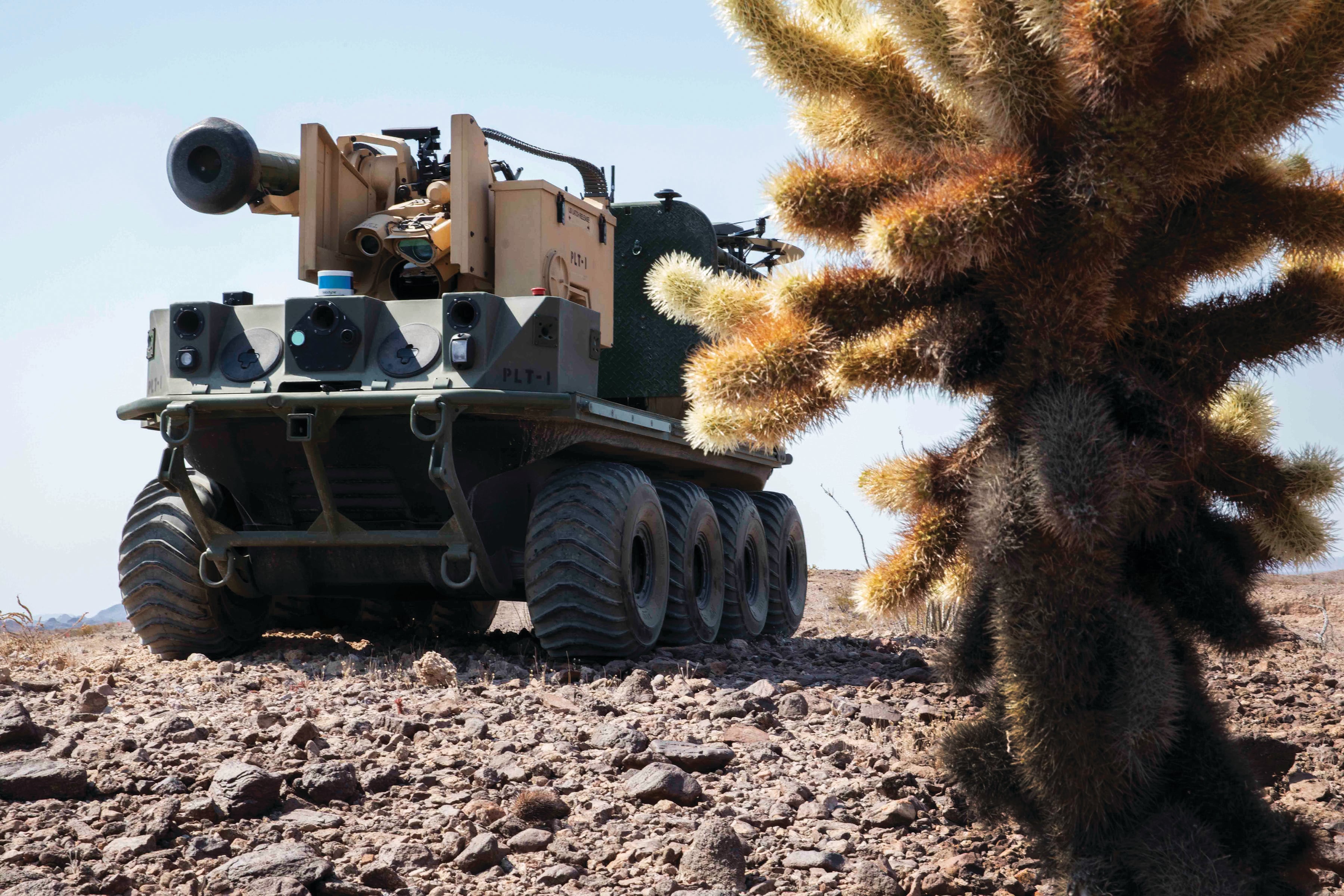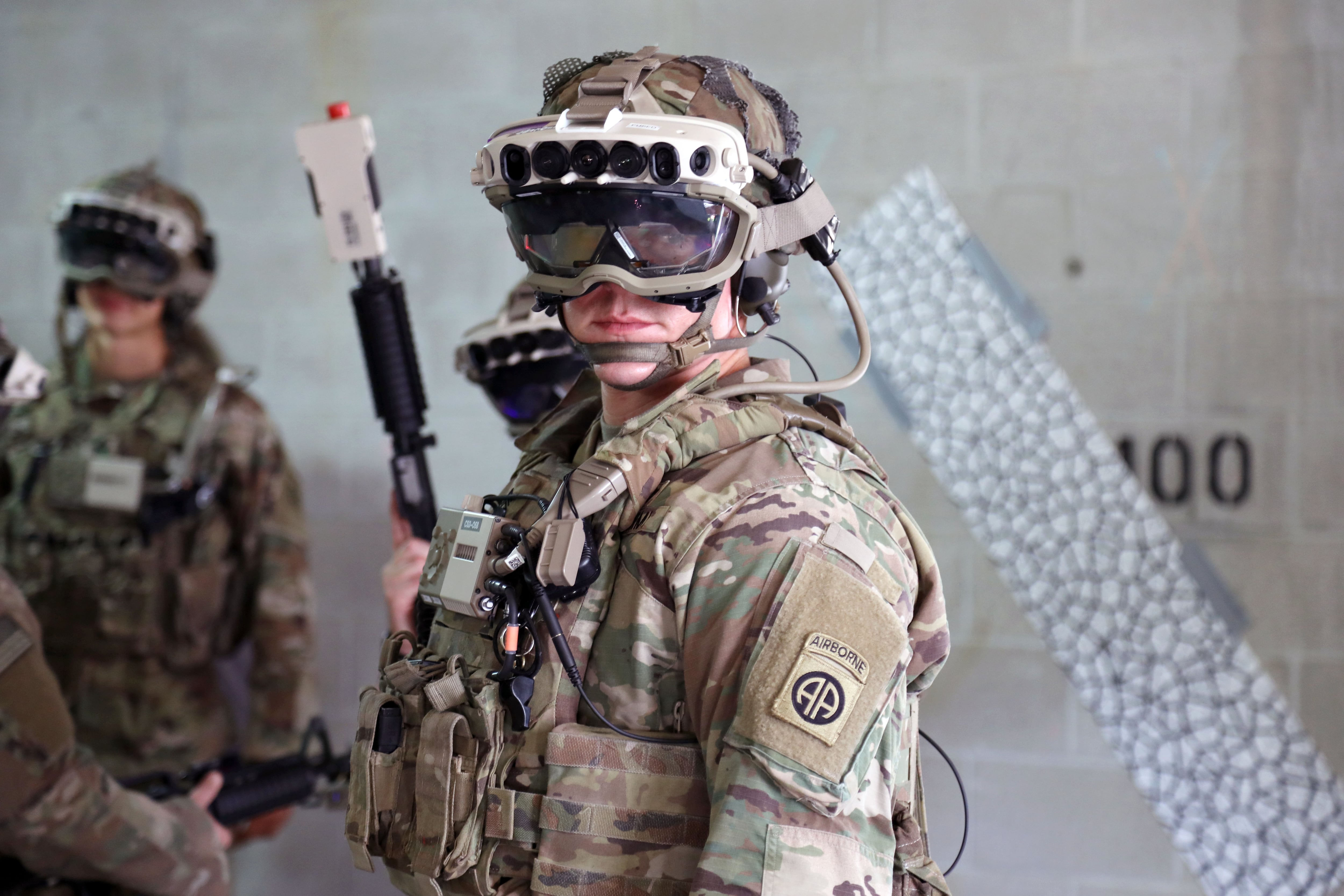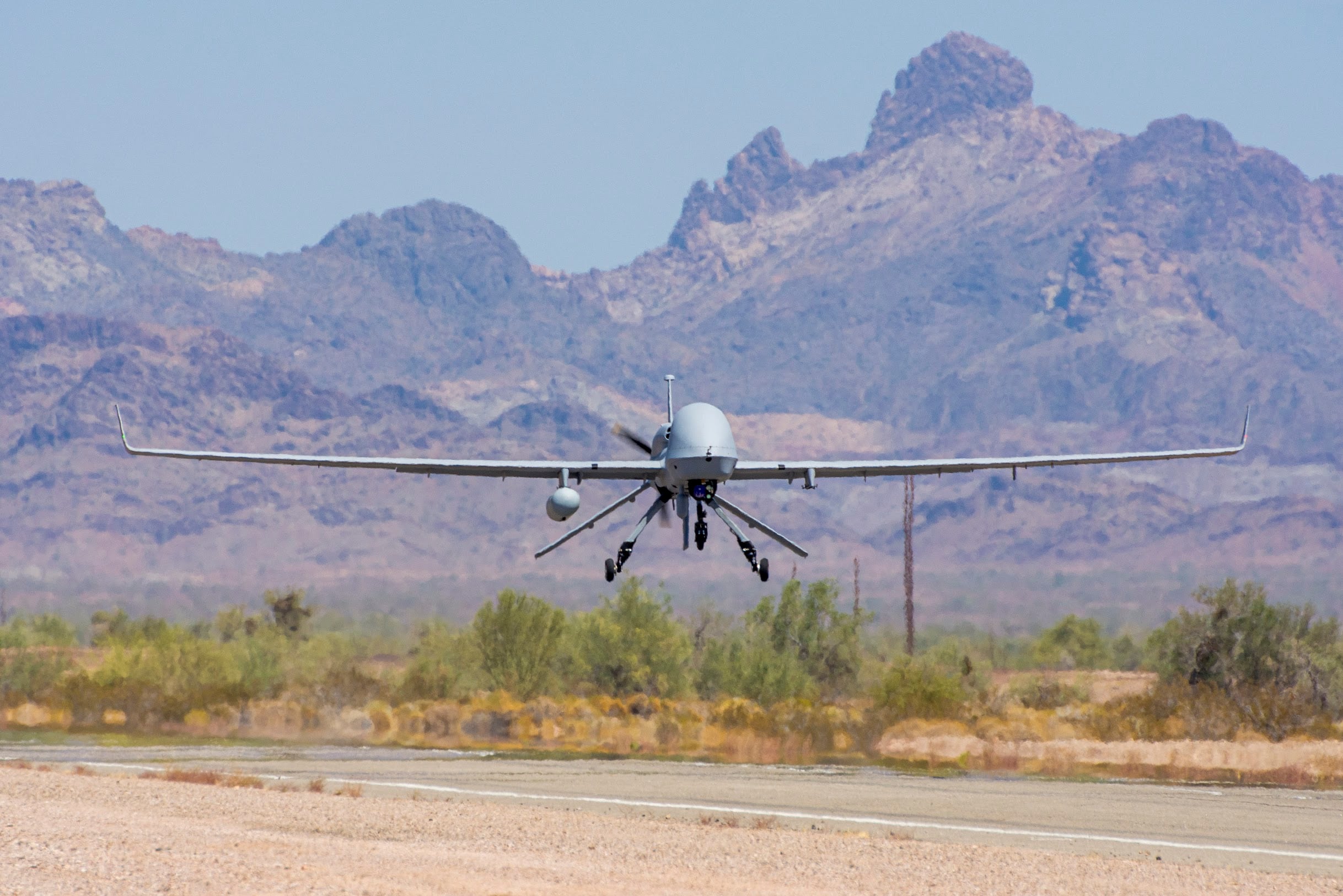WASHINGTON — After spending nearly a year preparing in the lab and in the field, the U.S. Army is set to launch a second round of its major experimentation event this fall, dubbed Project Convergence. The latest iteration is focused on how the joint force will defeat advanced adversaries and overcome their high-end capabilities in a future fight.
The Army and its partners have spent months running data through simulations in a joint lab and conducting smaller exercises — such as Edge 21, which demonstrated a complex air assault — to prepare for Project Convergence’s main series of live-fire events, which will take place Oct. 12-Nov. 10 at several U.S.-based installations.
The Army held Project Convergence 2020 for the first time at Yuma Proving Ground, Arizona, and mostly on its own, though there were a few joint assets thrown in at the last minute. But this year, “this is experimentation as a joint team to inform the Joint Warfighting Concept,” Lt. Gen. James Richardson, the deputy chief of Army Futures Command, said at a conference in Huntsville, Alabama, last month.
Over the last year, the Army has focused on refining battlefield decision aids to help the joint force sort through data more quickly and pursue the right targets and enemy weapons systems, according to Brig. Gen. John Rafferty, who is in charge of long-range precision fires development, the service’s No. 1 modernization priority.
The armed services are also working to develop the Joint All-Domain Command and Control, or JADC2, framework, which will pair the right sensors with the right shooters, as well as feed data through the proper command post to improve decision-making on the battlefield, Rafferty said during a conference at the Army’s Fires Center of Excellence on Fort Sill, Oklahoma.
“If we can have the architecture right for that, then we can do just about anything that we put our minds to,” Rafferty added. ”So Project Convergence is really the experimentation to answer the question of what could be with the joint force.”
The big questions
The joint force hopes to answer a series of questions through Project Convergence 2021, including which technologies will enable the military to penetrate an enemy’s anti-access, aerial-denial capabilities, and which emerging technologies are needed to execute the Joint All-Domain Operations concept.

The force is also looking for ways to incorporate artificial intelligence, machine learning, autonomy, robotics, and common data standards and architectures to more quickly make decisions across multiple domains of operations at the tactical edge.
It will also consider how to establish a joint network with the bandwidth to support operations in delayed, disconnected, intermittent and limited connectivity environments, as well as assess how available technologies work in such environments.
Expanding Project Convergence
By pulling in the joint force, the exercise is slated to grow from about 500-600 participants to roughly 7,000, with more than 900 data collectors, Richardson said. While last year’s exercise involved experimentation with roughly 30 technologies, this year’s version will see the joint force experiment with 107 different technologies.
Last year’s event was run by engineers, scientists and data collectors; this time, operational units will participate.
Among the expected participants this year are the Army’s Multi-Domain Task Force — which experiments with the Multi-Domain Operations concept and is based out of Joint Base Lewis-McChord in Washington state — and the 82nd Airborne Division — based at Fort Bragg, North Carolina.
Additionally, the services have developed an integrated joint data collection and assessment plan that will feed information to those crafting joint operational doctrine and designing future exercises. Leadership will receive a brief on the information during the exercise so they can make daily adjustments to enhance and challenge experimentation, according to Richardson.
The main event
The Army has organized its major live-fire events at Project Convergence into seven “use cases” focused on carrying out missions in the first and second island chains of the Indo-Pacific region. There were only three use cases at the first version.
Within each use case is several mission threads, according to Richardson.
The first three use cases will involve the joint force, while the remaining four will be land-focused, Col. Andre Abadie, Army Futures Command’s solutions architect, told Defense News.
The first use case focuses on maintaining joint all-domain situational awareness, including tapping space sensors in low Earth orbit.
The second is a joint air-and-missile defense engagement following an enemy missile attack, while the third will be a joint fires operation as the force transitions from crisis to conflict, Abadie said.
The fourth use case focuses on semiautonomous resupply; a fifth will experiment with an artificial intelligence- and autonomy-enabled reconnaissance mission.
The sixth use case will essentially replay Edge 21 — an Integrated Visual Augmentation System-enabled air assault mission — but with enhancements. IVAS is a heads-up display worn by soldiers that provides situational awareness.

The final use case will be a mounted AI-enabled attack, Abadie said.
Abadie declined to answer questions from Defense News on what weapon systems and technologies will be present at Project Convergence.
“As a matter of policy, we do not discuss specific capabilities that will be tested or recently developed,” he said. “Our goal is to minimize the risk of compromise of technology information, thereby ensuring the Army maintains substantial technological overmatch.”
Yet, Army officials have spoken in extensive detail about Project Convergence in recent weeks. Last month, for instance, Richardson said the Marine Corps is bringing its Ground/Air Task-Oriented Radar, the Navy is bringing its SM-6 missile, and the Air Force will be flying the F-35 fighter and a B-1 bomber.
During the air-and-missile defense use case, sensors will pass information to the Navy, which will shoot one target. Simultaneously, information will be shared with the Army’s Integrated Air and Missile Defense Battle Command System, or IBCS, so that a Patriot air defense system can take a shot at a separate target, Richardson said.
“That hasn’t been done. That’s a big deal,” he added.
The Missile Defense Agency will develop the command-and-control system that will coordinate those offensive fires, he explained, and then the Army will take a shot with its Precision Strike Missile, which is still under development.
As part of the autonomous resupply use case, the Army is bringing leader-follower technology, of which it spent several years developing, as well as an autonomous Black Hawk helicopter, he said.
The centerpiece of last year’s Project Convergence was Firestorm, a technology that uses sensor data to pick the best targets to attack. And it will be back and expanded for use across the joint force this year.
A new prototype of a directed-energy, maneuverable, short-range air defense system will also be present this year, said Lt. Gen. L. Neil Thurgood, the Army’s Rapid Capabilities and Critical Technologies Office director, said at the same conference as Richardson.
During the fires conference, Rafferty detailed a capability up for evaluation this year called SHOT, or Synchronized High OPTEMPO Targeting, an application that will be used in one of the ground stations, dubbed Tactical Intelligence Targeting Access Node (or TITAN for short).
SHOT will apply sensor data to target selection standards, the attack guidance matrix, and field artillery and fires support fundamentals, using AI and autonomous capabilities to pick the best targets to hit, he explained.
“We’ve got a long way to go to develop the algorithms that can find the targets,” Rafferty said. “But we’re making a lot of progress. … We can do this. But can we fight this? That is our challenge.”
The Army continues to refine its development, Rafferty said, “because we know that the volume and targets in large-scale ground combat — it’s going to overwhelm us.”
Additionally, the Army will experiment with making the IBCS work with the Advanced Field Artillery Tactical Data System, or AFATDS, the Army’s fire control network.
“We have to figure out how to be more effective with our systems, more efficient in how we fight; and it starts with this integration of AFATDS and IBCS,” Rafferty said. “We’ll open up opportunities.”
Jen Judson is an award-winning journalist covering land warfare for Defense News. She has also worked for Politico and Inside Defense. She holds a Master of Science degree in journalism from Boston University and a Bachelor of Arts degree from Kenyon College.




